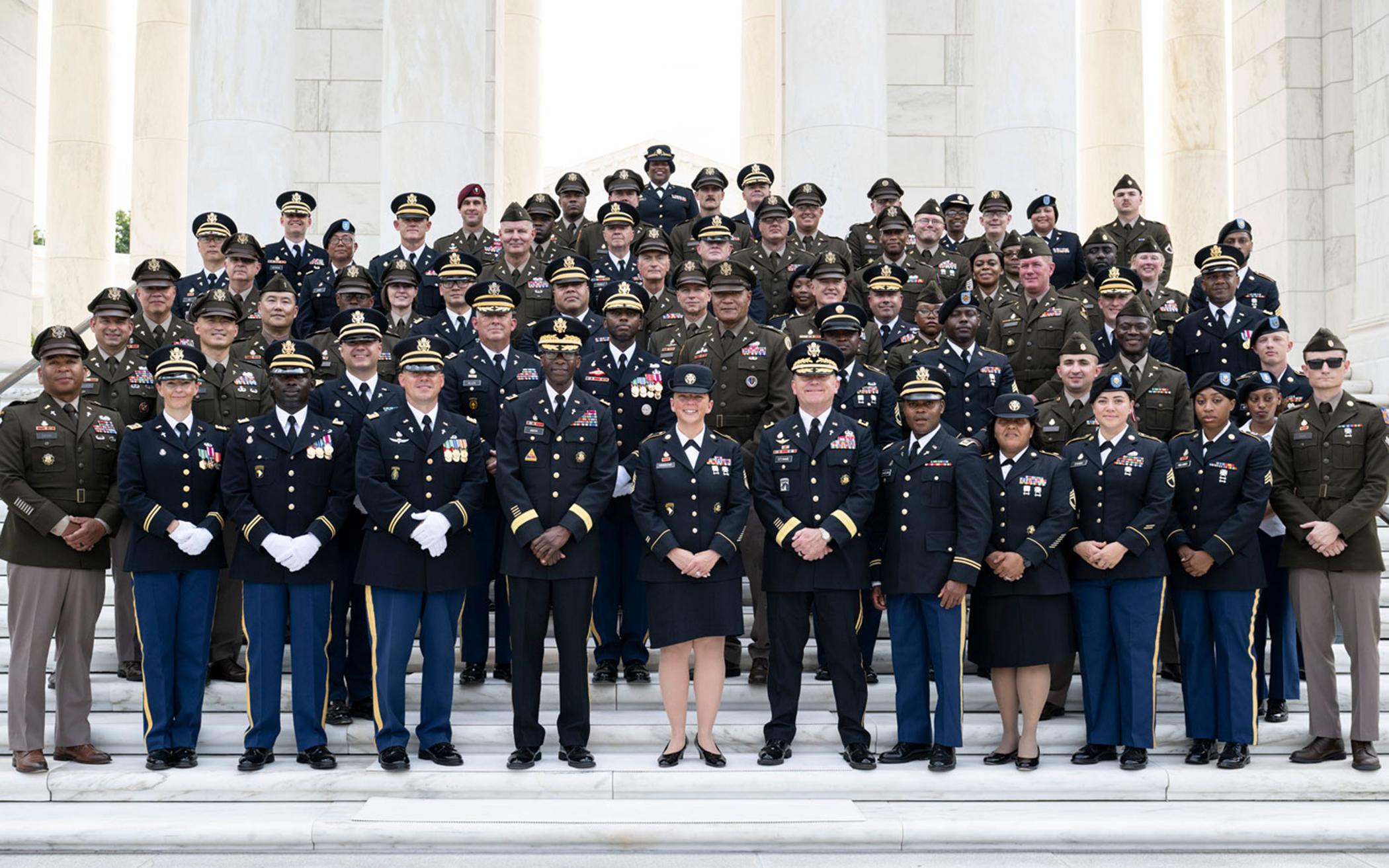The Banner has a subscription to republish articles from Religion News Service. This story by Adelle M. Banks, was published July 28, 2025 on religionnews.com. It has been edited for length and Banner style. The Banner added the 13th paragraph to provide context for the Christian Reformed Church.
In 1775, a year before there was a United States and six weeks after the Continental Army was formed, George Washington made a declaration that has shaped the military ever since.
“We need chaplains,” he reportedly remarked, prompting action by the Continental Congress near the start of the Revolutionary War.
The U.S. military chaplaincy marked 250 years on July 29, commemorated with a week of celebrations as across the globe, thousands of clergy in uniform continue to provide counsel and care to military members of a range of faiths or no faith.
“In times of peace and war, our chaplains have held fast as beacons of hope and resilience for our troops, whether enduring the brutal winter of Valley Forge, comforting the wounded and dying on the battlefields during the Civil War, braving trench warfare in World War I, storming the beaches of Normandy during World War II, marching the frozen mountains during the Korean War, slogging through the rice paddies and jungle battlefields of Vietnam, or traveling the bomb-filled roads of Iraq and Afghanistan,” said retired Chaplain (Major General) Doug Carver, a former Army chief of chaplains in charge of the Southern Baptist Convention’s chaplaincy ministries, at the denomination’s June annual meeting in Dallas.
A month later at the annual session of the Progressive National Baptist Convention in Chicago, Navy Chaplain J.M. Smith, the grandson of a former PNBC president, stood before delegates and described his just-completed tour as a Marine Corps command chaplain in Okinawa, Japan, and his plans to report to a ship in Norfolk, Va., to begin a tour of Europe and the Middle East and be promoted to lieutenant commander.
“My team and I have ministered to thousands of Marines, sailors, civilians, and Japanese,” he said. “We increased our chapel’s membership from eight to 100. We incorporated spiritual readiness into our base’s core curriculum.’’
Related: CRC Chaplains Honor Pioneers of the Past (June 16, 2017)
Chaplains serve in hospitals, hospices, and manufacturing plants, and while chaplaincy researchers see commonalities among them, there are also key differences in the military. All are involved in gaining the trust of people who are in their particular milieu, enabling them to think and sometimes pray through their times of greatest need and day-to-day struggles.
An example of both the danger and the dedication of military service chaplaincy is the 1943 death of four chaplains—two Protestant, one Catholic, and one Jewish—who helped save some of those aboard a World War II ship, turning over their life jackets and praying and singing hymns before it sank. All four were trained at Harvard University, then the site of the Army’s chaplain training school, during a two-year wartime period.
“It was a real defining moment,” said retired Gen. Steve Schaick, who served as Air Force chief of chaplains from 2018 to 2021, and in the same role for the Space Force from 2019 to 2021. “The stories that came from that really kind of highlighted chaplains at their best.”
Currently, the Army has 1,500 chaplains on active duty; 9,117 chaplains served in World War II, and 218 chaplains served in the Revolutionary War, according to the Army. The Navy Chaplain Corps, which began Nov. 18, 1775, had 24 chaplains during the Civil War; 203 by the end of World War I; 1,158 at its height in 1990; and currently has 898 on active duty, according to the Navy.
“Today’s Chaplain Corps includes Chaplains representing a multitude of faith groups, and the Chaplain Corps recruiting team is actively working to increase the Corps’ diversity, with a special focus on increasing the number of women Chaplains in the Corps and the number of Chaplains representing low-density faith groups,” reads an Army historical booklet marking the Chaplain Corps’ 250 years.
Initially, U.S. military chaplains were Protestants. The first Catholic chaplains served in the Mexican-American War in 1846, and the first rabbi was commissioned in 1862 and served in the Civil War. The first Muslim chaplains were commissioned in the Army in 1993. The first Buddhist Army chaplain was named in 2008, followed by the first Hindu chaplain in 2011.
The chaplaincy ministry of the Christian Reformed Church was officially approved in 1942, but there had been CRC chaplains serving in World War I. The first Canadian CRC chaplain was a Protestant Corrections Chaplain in Montreal in 1975. Today there are 17 active CRC chaplains and two chaplain candidates serving in the U.S. and Canadian armed forces.
They serve in settings where isolation, immediacy of ethical decisions, and a high level of confidentiality can make the work of military chaplaincy teams different from other settings where chaplains work. Chaplain Margaret Kibben, acting chaplain of the U.S. House of Representatives and former chief of chaplains of the Navy—the first woman in that role—pointed out those distinctions.
“It’s the one place that people can go where there’s essentially a sanctuary around them, wherever they find themselves, a safe place to have somebody to talk to about a whole host of issues,” she said, adding that topics can include anything from supporting military members’ families to handling combat responsibilities. “How do you deal with those issues in a place where you’re not going to look stupid, you’re not going to look weak or unreliable because you have these doubts and you have these concerns—to have a place that you can go to ensure that you can get that off your chest?”
c. 2025 Religion News Service
About the Author
Religion News Service is an independent, nonprofit and award-winning source of global news on religion, spirituality, culture and ethics.

